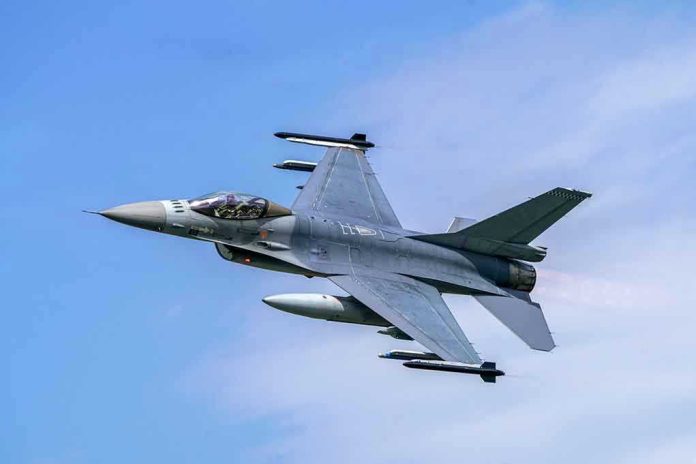
For one pilot, the Pacific became both a battleground and a rescue scene as a vintage Hawker Hunter plunged into the sea, leaving onlookers questioning the risks behind military contractor test flights and the fate of the man who survived what should have been a fatal crash.
Story Snapshot
- A Hawker Hunter jet owned by ATAC crashed off the Californian coast, raising questions about contractor flight safety.
- The pilot was recovered with serious injuries, but survived—a rarity in ocean ditchings involving high-performance aircraft.
- The incident spotlights the hidden world of civilian contractors flying ex-military jets for military training roles.
- Speculation swirls about the cause, the rescue, and what this means for the future of outsourced aerial combat training.
When a Classic Fighter Meets the Sea: The Crash Details
On October 15, the calm expanse off California was interrupted by the unmistakable roar of a Hawker Hunter—callsign ATAC 12—moments before disaster struck. The jet, operated by Airborne Tactical Advantage Company (ATAC), a civilian contractor specializing in adversary air support, impacted the water in a scene that shocked local beachgoers and aviation enthusiasts alike. The crash immediately triggered emergency response protocols, with search and rescue teams racing against time to locate the downed pilot. Eyewitnesses described a plume of spray and debris, painting a vivid image of the danger inherent in such operations.
As details emerged, it became clear that this was not a routine training mishap. The Hawker Hunter, a British-designed jet fighter introduced in the 1950s, has long been retired by front-line air forces but remains a workhorse for contractor adversary roles. Its presence in civilian hands is already a conversation starter; its plunge into the sea raises bigger questions about the safety and oversight of military-grade flight operations conducted by private companies. The pilot, whose name has not been released, was recovered with serious injuries but is expected to survive. The swift response by rescue teams was a testament to their preparedness, yet the outcome for the pilot was as much about luck as it was about training.
Exclusive Details: Hawker Hunter Crashes Off California, Pilot Recovered
A Hawker Hunter owned by ATAC crashed into the sea off the Californian coast on Oct. 15. Local news reports state that the pilot was recovered with serious injuries.
Story: https://t.co/ILdJoi3T2K
— The Aviationist (@TheAviationist) October 16, 2025
Contractor Flight Operations: The Risks and Realities
ATAC and similar contractors fill a critical niche for the U.S. military, providing realistic air combat training using retired fighter jets. These flights simulate adversary tactics, challenging Navy and Air Force pilots with threats they could face in real-world combat. While the Hawker Hunter is considered reliable, pushing any aging jet to its limits involves risks that cannot be ignored. Maintenance and oversight standards are often debated, especially when accidents occur. Critics argue that outsourcing such vital training introduces complexities in accountability and safety, while proponents insist that contractors bring valuable expertise and cost savings.
Some experts point out that contractor pilots often have military backgrounds, bringing years of experience to the cockpit. Yet, even the best training cannot eliminate the danger posed by mechanical failure, unpredictable weather, or pilot error. This crash forces a closer look at the regulatory frameworks governing these operations, and whether current measures are sufficient to protect pilots and the public.
The Human Factor: Survival, Recovery, and Open Questions
Surviving a jet crash at sea is statistically improbable. The impact forces, risk of drowning, hypothermia, and disorientation conspire against even the most prepared aviators. In this case, the pilot’s recovery, though marred by serious injuries, stands as an extraordinary testament to resilience and the effectiveness of coordinated rescue efforts. The incident has prompted a wave of support and scrutiny within the aviation community. Many are asking how the crash unfolded: Was it a mechanical failure, a bird strike, or a training maneuver gone wrong?
Investigations are underway, but answers may be slow to emerge. The Hawker Hunter crash is a stark reminder of the thin line between high-risk training and tragedy, especially when outsourced to civilian companies. For those in the business of simulated combat, every flight is a calculated gamble—one that, on this occasion, ended with both loss and survival. The story is far from over, as regulators, contractors, and military clients all seek to learn from the Pacific plunge, hoping the next headline will tell of lessons learned, not lives lost.
Sources:
Exclusive Details: Hawker Hunter Crashes Off California, Pilot Recovered










